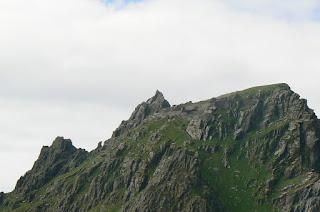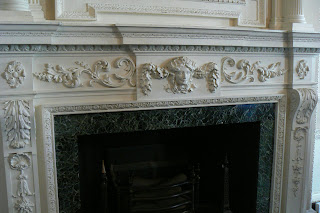 This first picture is of the island, taken from the boat. At the very top, you may be able to see a stone wall and small, conical structures - this is the monastery itself. (It may help to click on the picture to see a larger version.) Below you can see those "beehives" close up - where the monks likely lived.
This first picture is of the island, taken from the boat. At the very top, you may be able to see a stone wall and small, conical structures - this is the monastery itself. (It may help to click on the picture to see a larger version.) Below you can see those "beehives" close up - where the monks likely lived.
 Here is a rare family picture - just behind us is the cross and you can see Small Skellig in the background.
Here is a rare family picture - just behind us is the cross and you can see Small Skellig in the background. This is a view of Small Skellig from the window of what was likely the chapel. Just outside the window is the cemetery.
This is a view of Small Skellig from the window of what was likely the chapel. Just outside the window is the cemetery.
This last picture is to give you an idea of how one reaches the monastery! The stairs were built by the monks and still work fine today, though they are not for the faint of heart or the faint of legs!









































